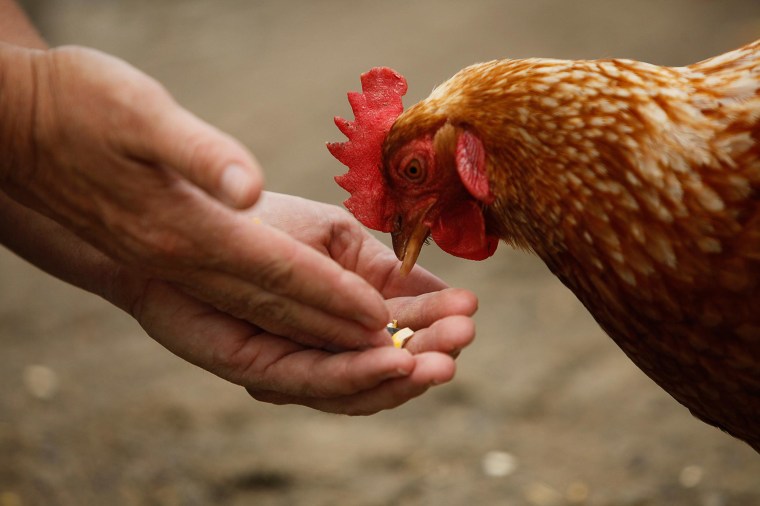Keeping backyard chickens in urban settings may be a growing trend, but federal health officials are warning about a surprising downside: salmonella infections tied to kissing and other close contact with live poultry.
Nearly 2,200 salmonella infections tied to live poultry were logged between 1990 and 2013, including 306 people who were hospitalized and five who died, according to new figures compiled by veterinary experts at the Centers for Disease Control and Prevention.
"People just don't know a healthy chicken can carry germs like salmonella," said Casey Barton Behravesh, a zoonotic disease expert with the CDC.
And those are just the cases reported. Federal officials estimate that for every salmonella infection they know about, there are 30 others that go undetected, which works out to nearly 67,000 illnesses during those 23 years.
Of those cases, more than 50 percent of the victims kept poultry inside the house and 14 percent reported kissing the birds, the CDC officials found.
“Since 2007, outbreaks increased in size, occurred year-round and were more frequently linked to backyard flock ownership,” wrote Colin Basler, an epidemic intelligence service officer at the CDC presenting his findings at a conference Tuesday.
He and his colleagues analyzed data from the CDC’s National Outbreak Reporting System, and also questionnaires administered during 21 multi-state outbreaks between 2008 and 2013 to analyze high-risk practices.
Chicks were the most common problem, accounting for 60 percent of cases, while ducklings were the culprit in 27 percent of cases. Most people who got sick were kids; the median age was 9. And many fell ill within days or weeks of acquiring chicks or ducklings; the median time between getting the pets and getting sick was 17 days.
Health officials have warned for years about the popular practice of giving children pet chicks or ducklings at Easter. But home-grown chickens have become far more popular, according to Rob Ludlow, owner of BackYardChickens.com, who says 1 million people a month visit his site and that membership has boomed since he started in 2007.
That’s about when the salmonella outbreaks tied to live poultry started to take off, too, CDC officials noted.
Live poultry may have salmonella germs in their droppings and on their feathers, feet and beaks, even when they look healthy and clean. The germs also get on cages, coops and the environment where the birds live and roam. Salmonella infections can be dangerous to the very young, the very old and those with compromised immune systems.
These recurring outbreaks highlight the need for better education and new strategies to keep chickens from bringing illnesses home to roost.
